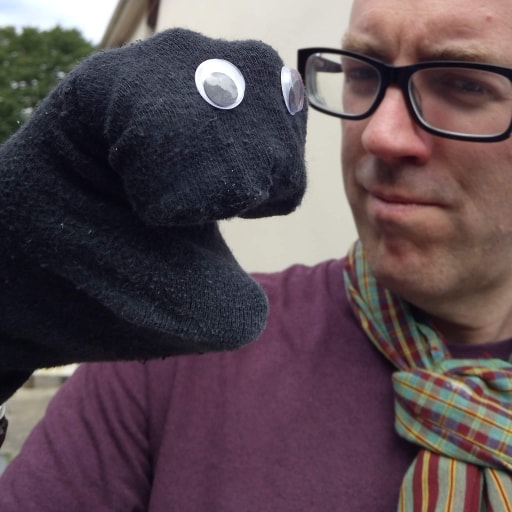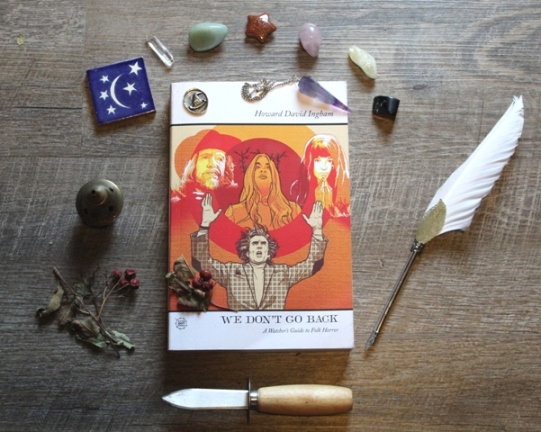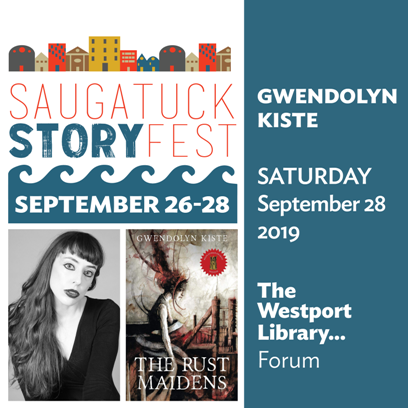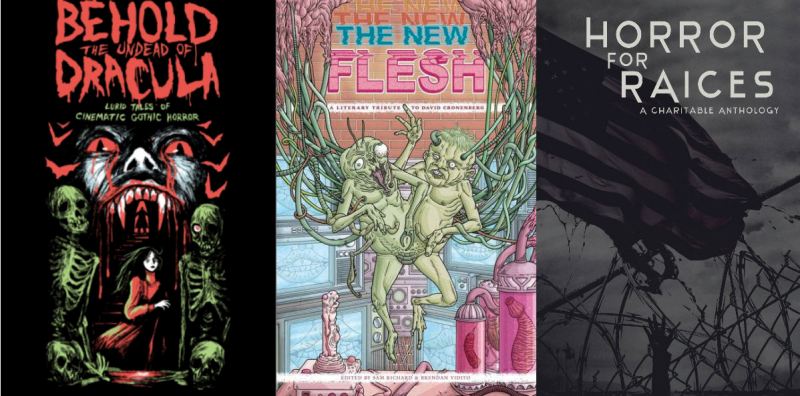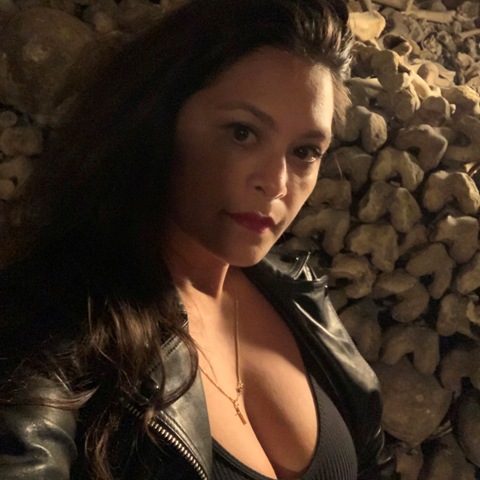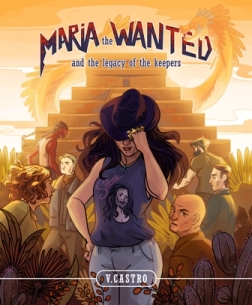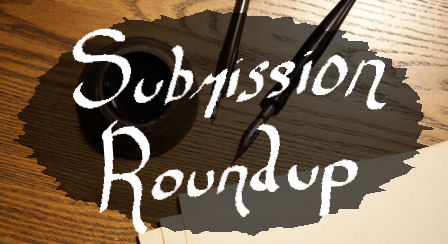Welcome back for this week’s author interview! Today I’m thrilled to feature Laura Mauro. Laura is the British Fantasy Award-winning author of numerous short stories, and her debut collection, Sing Your Sadness Deep, is out next week from Undertow Publications.
Recently, Laura and I discussed her new collection, her process as a short fiction author, and what she’s working on next.
A couple icebreakers to start: when did you decide to become a writer, and who are some of your favorite authors?
 I guess I never really decided as such. It’s just a thing that sort of happened! I’ve been writing in some capacity or another since I was very young – my mum has poems I wrote at 6 years old. So I’ve always known that writing is something I enjoy doing. During my teens and early twenties I half-wrote epic fantasy novels (inevitably rip-offs of JRPG games I’d enjoyed), dabbled in cyberpunk (and realised I know nothing about technology, so gave up) and wrote a lot of fanfiction for various fandoms. (I still write fanfiction now, when I have the time.)
I guess I never really decided as such. It’s just a thing that sort of happened! I’ve been writing in some capacity or another since I was very young – my mum has poems I wrote at 6 years old. So I’ve always known that writing is something I enjoy doing. During my teens and early twenties I half-wrote epic fantasy novels (inevitably rip-offs of JRPG games I’d enjoyed), dabbled in cyberpunk (and realised I know nothing about technology, so gave up) and wrote a lot of fanfiction for various fandoms. (I still write fanfiction now, when I have the time.)
Around 2011 or so I started writing short stories, just because there were ideas in my head that I really wanted to pry out, and I’d never tried writing short original fiction. At that time, I had no intention of publishing – it just wasn’t something I’d considered. So I posted some of the stories on my then-blog, just so they would be out in the world somewhere. Unexpectedly, I received a message from a writer who went on to become a friend, asking why I wasn’t submitting my stories anywhere. So I did. After a load of rejections I finally sold my first short story, ‘Red Rabbit’, in 2012. It was around then that I realised this was something I actually wanted to keep doing.
Huge congratulations on your forthcoming collection, Sing Your Sadness Deep. How did you choose the stories to include in the table of contents? What particular themes does the book explore?
Thank you very much! My back catalogue is still relatively small, but I knew I didn’t want to just throw everything I’d ever written into the collection. I wanted to curate it so I felt at least that it was representative not just of the writer I am today, but this whole period of my life so far. Because I haven’t been writing that long, relatively speaking, so it still feels like I’m in the process of becoming a ‘proper’ writer! The stories in the collection span the whole range of my career so far, right back to the very beginning. I’m a bit nervous about this, actually. I’m worried that people will either read my early stories and think I’ve lost it, or alternatively will like my later stories but think my early stories are rubbish. But those older stories are still an important part of who I am as a writer, so to paraphrase a very wise friend, you just have to let the book go out into the world and people will make of it what they make of it.
In terms of themes…I don’t consciously write with a theme in mind, but it’s been pointed out to me a couple of times that I tend to write about outsiders, and ‘the other’. And specifically that I approach ‘the other’ with compassion. There’s a quote from my favourite ever book, Moominland Midwinter by Tove Jansson, which I keep coming back to: “There are such a lot of things that have no place in summer and autumn and spring. Everything that’s a little shy and a little rum. Some kinds of night animals and people that don’t fit in with others and that nobody really believes in. They keep out of the way all the year. And then when everything’s quiet and white and the nights are long and most people are asleep—then they appear.” I’ve always related to this as a bit of an oddball who only really comes alive in winter. So I guess I tend to write about those ‘night animals’, because someone has to tell their stories.
The cover of your collection is an instant classic. It conjures images of fairy tales, horror, and the kind of delightful creepiness that Edward Gorey specialized in. What can you tell us about how that cover came to fruition? Who’s the artist, and did you have any input on the cover’s development?
 Thank you, I love it! So the artwork is by Stephen Mackey, whose art is just so gorgeous, these surreal and dreamy images which tread the line between spooky and beautiful. The cover design was by Vince Haig, who I think has done an incredible job of turning a piece of artwork into a fully realised book cover. Michael Kelly at Undertow initially sent me through a selection of preliminary cover designs based on Stephen Mackey’s art, but the moment I saw the fox I knew that was the one. I love foxes anyway, but there was something about the whole feel of the cover, that kind of suspenseful, eerie atmosphere it evokes. I instantly knew that this was the artwork I wanted my stories to be represented by.
Thank you, I love it! So the artwork is by Stephen Mackey, whose art is just so gorgeous, these surreal and dreamy images which tread the line between spooky and beautiful. The cover design was by Vince Haig, who I think has done an incredible job of turning a piece of artwork into a fully realised book cover. Michael Kelly at Undertow initially sent me through a selection of preliminary cover designs based on Stephen Mackey’s art, but the moment I saw the fox I knew that was the one. I love foxes anyway, but there was something about the whole feel of the cover, that kind of suspenseful, eerie atmosphere it evokes. I instantly knew that this was the artwork I wanted my stories to be represented by.
Congratulations on your Shirley Jackson Award nomination for last year’s “Sun Dogs.” What can you share about the inspiration and development of that story?
Thank you! ‘Sun Dogs’ was a weird one in that the title came first. The only thing I was certain of initially was that it would be set in the desert. Do you ever go wiki-walking? Where you start off on one Wikipedia article and then click on a bunch of interesting links from that article, and click on links in those articles, and before you know it it’s 3am and you suddenly know everything there is to know about rural towns in Chernushinksy District in the Ural Mountains of Russia? It was like that. I started reading about deserts, then zeroed in on the Mojave, then read about people who live ‘off-grid’ in the desert. And then I fell down a rabbit hole reading about preppers – people who obsessively ‘prepare’ for some nebulous civilisation-ending event, which was both fascinating and a bit terrifying. The story itself spiralled out of those subjects.
You’re an accomplished short fiction author. Do you have a specific approach to writing your short stories, or does each one develop organically on its own?
They all tend to happen organically. Most of the time I have some kind of central concept or event or place that I know I want to write about, but the meat and bones of the story only tend to become apparent once I sit down and start writing. More often than not, I know how a story ends before I sit down and write it, but how I get there is a complete mystery.
In addition to your own fiction, you’re also a reviewer. What inspired you to become a reviewer, and what if anything have you learned as a storyteller by reviewing the work of others?
Reviewing is hard! I strive to be completely objective about the books I review and that can be difficult because obviously you never really want to say anything bad about a book. All writers know what it feels like to be on the receiving end of a bad review! But at the same time I think it’s important to be truthful. I’ve very rarely read a book that didn’t have at least one or two good points, so I’ll always try to balance criticism by noting those things I enjoyed. I’ve been lucky so far in that all the books I’ve reviewed for Black Static have been really enjoyable, so it’s not been too difficult to be both honest and positive. It’s very interesting to review books whilst simultaneously wearing your ‘reader’ and ‘writer’ hat. Mostly I tend to note the things I enjoyed for whatever reason and consciously try to replicate that effect in my own work.
What projects are you currently working on?
I am finishing up a Master’s in Modern and Contemporary Literature and am deep in the process of writing a 15,000 word dissertation on liminal physical spaces in horror fiction, which is both really interesting and way more difficult than I anticipated, particularly with the introduction of spatial theory. Outside of university, I am chugging away at a project which I hope will become a novella or novel – weirdly enough, it’s also about liminal spaces. I may be mildly obsessed.
Where can we find you online?
I tweet at @lauranmauro, and I blog here and there at www.lauramauro.com. I’m also on Facebook and Pinterest if that’s your thing.
Tremendous thanks to Laura Mauro for being this week’s featured author!
Happy reading!

